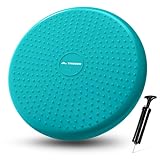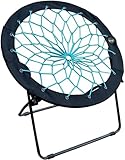In today’s fast-paced world, many individuals, including adults and children, are diagnosed with Attention Deficit Hyperactivity Disorder (ADHD). One of the challenges they often face is maintaining focus and staying comfortable, especially during tasks that require extended periods of sitting, such as studying, working, or reading.
A suitable desk chair can make a difference for individuals with ADHD, promoting comfort, concentration, and overall well-being. This guide will explore the essential features to consider when selecting the best desk chair for ADHD, ensuring a supportive environment that fosters productivity and comfort.
Definition of ADHD:
Before delving into the specifics of choosing the right desk chair for individuals with ADHD, it’s important to understand what ADHD is clearly. Attention Deficit Hyperactivity Disorder (ADHD) is a neurodevelopmental condition characterized by persistent hyperactivity, impulsivity, and inattention patterns.
There are three main types of ADHD: hyperactive-impulsive, inattentive, and combined presentation. These symptoms can significantly impact an individual’s ability to focus, stay organized, and manage tasks effectively. Addressing and managing these symptoms is crucial to enhancing the quality of life for those with ADHD.
Symptoms of ADHD:
ADHD symptoms encompass a range of challenges that can influence daily functioning. The hyperactive-impulsive type involves excessive fidgeting, restlessness, impulsive decision-making, and difficulty remaining seated or quiet.
The inattentive type is characterized by trouble sustaining attention, forgetfulness, disorganization, and difficulty following instructions. Many individuals experience a combined presentation of both hyperactive-impulsive and inattentive symptoms. These symptoms can profoundly affect concentration, task completion, and overall productivity.
Managing ADHD symptoms involves strategies such as cognitive-behavioral therapy, medication, and creating an environment that supports focus and calmness. Addressing these symptoms is essential for individuals to lead fulfilling lives.
Benefits of an Active Chair for ADHD:
As individuals with ADHD strive to create an environment that supports their focus and productivity, choosing seating becomes crucial. Active chairs, designed with the specific needs of ADHD individuals in mind, offer a range of benefits that contribute to improved well-being and enhanced attention.
In this section, we’ll explore the advantages of incorporating active chairs into your workspace, from improved posture and core strength to sensory input and extended periods of concentration.
Improved Posture and Core Strength:
Maintaining proper posture and core strength is essential for individuals with ADHD, as it directly correlates with their ability to stay focused and productive. Active chairs, featuring ergonomic designs and adjustable heights, encourage users to engage their core muscles while sitting.
This engagement not only helps in maintaining an upright posture but also strengthens the core over time. These chairs are pivotal in promoting better posture, enhancing focus and overall comfort during tasks by aligning the spine and providing a stable foundation.
Sensory Input and Stimulation:
Sensory input and stimulation are vital for individuals with ADHD, as they can significantly impact attention and hyperactivity levels. Active chairs cater to this need by offering various options, such as stability balls, wobble, and meditation chairs.
These seating choices provide controlled movement and a degree of fidgeting that can help channel restless energy and improve concentration. The subtle, constant motion offered by these chairs provides a sensory-rich experience, allowing individuals to engage their minds while satisfying their need for movement.
Extended Periods of Concentration:
Extended periods of concentration can pose a challenge for individuals with ADHD due to their tendency to become restless or easily distracted. Active chairs offer a solution by allowing controlled movement, promoting better blood flow, and engagement of executive functioning skills.
The benefits of using functional chairs for ADHD individuals are manifold: increased concentration, reduced restlessness, improved body awareness, and heightened sensory input. These chairs create an environment that aligns with the natural inclination for movement, enabling longer periods of sustained attention and concentration.
Incorporating active chairs into your workspace can revolutionize how individuals with ADHD approach tasks, fostering comfort, focus, and productivity. By recognizing the significance of improved posture, sensory input, and extended concentration, you’re taking a proactive step towards creating an environment that caters to their unique needs, leading to a more successful and fulfilling work or study experience.
Types of Active Chairs for ADHD:
Exploring active seating solutions for individuals with ADHD opens up possibilities to enhance focus and comfort. These innovative chairs encompass a range of designs that promote movement, engagement, and sensory input, catering to the unique needs of those dealing with ADHD symptoms.
Wobble Chairs and Stools:
Wobble chairs and stools emerge as dynamic seating options ideal for individuals with ADHD, offering a blend of movement and stability. These chairs come in various styles, with rounded bases that allow controlled rocking and shifting while maintaining balance. They are particularly popular in flexible seating classrooms, catering to different age groups.
For elementary school students, options like the ECR4Kids SitWell Height-Adjustable Wobble Stool provide an engaging yet supportive experience. For teenagers, the Kore Design Teen Active Chair is a top-rated choice, designed to improve posture and focus. The Pettibon System, Therapeutic Wobble Chair also stands out as a specialized solution, relieving back pain while promoting movement and core engagement.
Wiggle Seats and Cushions:
Wiggle seats and cushions serve as ingenious tools to address the sensory needs of individuals with ADHD. These seating options allow for channeling excess energy and fidgeting in a controlled manner. Wiggle cushions, such as the Gaiam Balance Disc, introduce an element of instability that engages core muscles while allowing subtle movement.
Sensory cushions, on the other hand, offer textured surfaces for tactile stimulation. These active seating choices provide a constructive outlet for restlessness, aiding in maintaining focus and regulating emotions.
Ergonomic Designs with Affiliate Links:
Regarding office environments, ergonomic designs take center stage, catering to the needs of individuals with ADHD. These chairs prioritize adjustability and comfort, offering features like armrests, lumbar support, height adjustability, and materials that ensure breathability and durability.
Chairs like the Herman Miller Aeron and the Steelcase Gesture exemplify these qualities, providing a supportive workspace that reduces distractions and restlessness commonly associated with ADHD. To explore these ergonomic solutions further, consider the affiliate links provided for convenient access to detailed information and purchasing options.
The array of active seating options for individuals with ADHD is a testament to the dedication to improving focus, comfort, and overall well-being. Whether in educational settings or professional environments, these chairs offer a proactive approach to managing ADHD symptoms, transforming how individuals interact with their surroundings.
Pros & Cons of Active Chairs for ADHD:
Active chairs have garnered attention as innovative solutions to enhance focus and engagement for individuals with ADHD. However, like any tool, they come with their own set of advantages and potential drawbacks. Let’s explore the pros and cons of incorporating active chairs into the lives of individuals dealing with ADHD.
Pros:
1. Enhanced Focus and Engagement: Active chairs provide a dynamic seating experience that allows controlled movement. This movement can help individuals with ADHD channel their excess energy constructively, improving focus and task engagement.
2. Sensory Stimulation: Active chairs offer sensory input through movement, textures, or instability. This sensory stimulation can help individuals regulate their emotions and attention, contributing to a more balanced and focused state.
3. Improved Posture: Active chairs often promote better posture by encouraging core engagement and proper spinal alignment. This is essential for individuals with ADHD, as it can reduce restlessness and improve overall comfort.
4. Core Muscle Engagement: The subtle movements facilitated by active chairs engage core muscles, contributing to improved core strength. Strong core muscles can aid in maintaining stability and focus during tasks.
5. Variety of Options: Active chairs come in various styles and designs, catering to individual preferences. Whether it’s a wobble chair, a sensory cushion, or an ergonomic office chair, individuals can choose the best option that suits their needs.
Cons:
1. Distraction: For some individuals with ADHD, the movement provided by active chairs could distract them, drawing their attention away from tasks. Finding the right balance between activity and concentration is essential.
2. Discomfort for Some Users: While active chairs can be beneficial, they might not be comfortable for everyone. Individuals not accustomed to movement while sitting might find the constant shifting uncomfortably.
3. Potential for Overstimulation: Some individuals with ADHD may be sensitive to sensory input. Certain active chairs, such as those with textured surfaces, could lead to overstimulation and discomfort.
4. Limited Use in Formal Settings: In more formal settings like traditional office environments or classrooms, unconventional seating options like wobble chairs might not be practical or well-received.
5. Cost Consideration: High-quality active chairs with specialized features can sometimes be more expensive than standard seating options. This could be a factor to consider when making a purchasing decision.
Incorporating active chairs into the daily routine of individuals with ADHD requires careful consideration of the benefits and potential drawbacks. While these chairs can offer valuable support in managing symptoms and enhancing focus, assessing individual preferences is important. It needs to determine whether they suit the workspace or learning environment.
Conclusion:
In conclusion, finding the best desk chair for ADHD involves considering a combination of ergonomic design, adjustability, and comfort features. With the right chair, individuals with ADHD can create an optimal workspace that supports focus, concentration, and overall well-being. Remember to assess each chair’s features, test its adjustability, and consider individual preferences to make an informed decision. By investing in a quality desk chair tailored to the needs of ADHD individuals, you’re taking a significant step toward creating a productive and comfortable workspace that maximizes your potential. Your chair isn’t just a piece of furniture; it’s a tool that empowers you to succeed.









